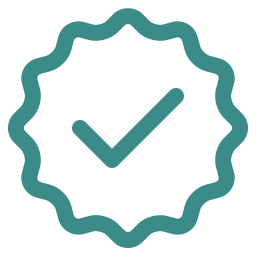Fluidity and Freedom: Enhancing Flexibility and Range of Motion through Dynamic Pilates Stretches
Are you looking to unlock your body's full potential?
Do you want to improve your flexibility, increase your range of motion, and enhance your overall physical performance? Look no further than Pilates for flexibility!
In this article, we will explore how Pilates can help you achieve a supple and flexible body through dynamic stretches.
Pilates is a popular exercise method that focuses on core strength, stability, and flexibility.
By engaging in a series of fluid movements, Pilates helps to stretch and strengthen the muscles in your entire body.
Whether you're an athlete looking to enhance your performance or simply someone who wants to improve their overall fitness level, Pilates can provide you with the tools you need to unlock your body's true potential.
So join us as we delve into the principles of Pilates and discover how dynamic stretching can help unlock suppleness and range of motion like never before.
Understanding the Principles of Pilates
Get ready to dive into the world of Pilates and discover the key principles that'll Unlock your Flexibility and enhance your range of motion!
When it comes to Pilates for flexibility, understanding the principles of Pilates is essential.
Unlike yoga, which focuses on holding poses for extended periods, Pilates emphasizes controlled movements and proper alignment to improve flexibility especially when performing it on an AeroPilates.
By incorporating these principles into your practice, you can achieve a greater range of motion and suppleness in your body.
One of the key principles of Pilates is concentration. During a Pilates session on a Cadillac Pilates, it's crucial to fully engage your mind and focus on each movement.
By doing so, you're able to connect with your body on a deeper level and work towards enhancing flexibility.
This level of concentration also helps to prevent injury by ensuring that you're performing each exercise correctly.
Another principle is precision. In Pilates, every movement has a purpose and should be executed with precision.
This attention to detail allows you to target specific muscles and joints, promoting increased flexibility in those areas.
Precision also helps in building strength along with flexibility as it ensures that you're engaging the correct muscles throughout each exercise.
Lastly, control plays a significant role in improving flexibility through Pilates.
The controlled movements not only help in preventing strain or injury but also allow for gradual progression towards a greater range of motion over time.
Through controlled movements, you can safely push yourself beyond your current limits without risking injury or overextending yourself.
Understanding the principles of Pilates is vital when aiming to improve flexibility and enhance range of motion.
Unlike yoga, which focuses on holding poses, Pilates incorporates controlled movements while emphasizing concentration, precision, and control.
By embodying these principles during your practice sessions regularly, you can unlock greater suppleness in your body while minimizing the risk of injury or strain commonly associated with stretching exercises.
The Benefits of Dynamic Stretching
Experience the incredible advantages of incorporating dynamic stretching into your routine and watch as your body becomes a graceful, flexible masterpiece.
Pilates for flexibility is all about unlocking your body's natural suppleness and range of motion through dynamic stretches.
Unlike static stretching, which involves holding a stretch for an extended period, dynamic stretching actively moves the muscles and joints through a full range of motion.
This not only increases flexibility but also improves circulation, warms up the body, and prepares it for more intense physical activity.
Dynamic stretches have numerous benefits that make them an essential component of any fitness routine.
Firstly, they improve joint mobility by increasing synovial fluid production, which lubricates the joints and reduces friction.
This leads to better overall joint health and helps prevent injuries during exercise or daily activities.
Secondly, dynamic stretching activates multiple muscle groups simultaneously, promoting muscular balance and coordination throughout the body.
It also helps to lengthen tight muscles while strengthening weak ones, creating a more balanced physique.
Furthermore, incorporating dynamic stretches into your Pilates routine can enhance athletic performance by improving power output and efficiency of movement.
By dynamically moving through different ranges of motion that mimic specific sports or activities, you train your muscles to be more explosive and adaptable in real-life scenarios.
This translates into improved speed, agility, and overall athletic performance.
Pilates for flexibility offers immense benefits that are further enhanced by incorporating dynamic stretches into your routine.
These stretches promote joint mobility, muscular balance, and coordination while enhancing athletic performance potential.
So why wait? Start experiencing these incredible advantages today by integrating dynamic stretching techniques into your Pilates practice!
Engaging the Deep Muscles for Improved Flexibility
Enhancing your flexibility is all about activating the deep muscles in your body, leading to an improved range of motion and increased overall mobility.
When it comes to Pilates for flexibility, engaging these deep muscles is essential.
Pilates exercises target the core muscles, such as the transversus abdominis and pelvic floor, which play a crucial role in stabilizing the spine and pelvis.
By strengthening these deep muscles, you can create a solid foundation for improved flexibility.
One of the main benefits of engaging the deep muscles through Pilates stretching is that it helps to lengthen and release tension in tight muscles.
As we go through our daily activities, certain muscles can become shortened or overworked, leading to limited flexibility.
By incorporating Pilates stretching into your routine, you can specifically target these areas and encourage them to relax and elongate.
This not only improves flexibility but also helps to prevent injuries by promoting balanced muscle development.
If you're new to Pilates or looking for an effective way to improve your flexibility, reformer stretching is a great option.
The Pilates Reformer machine provides support while allowing for controlled movements that engage the deep muscles effectively.
Through various exercises on the reformer, you can stretch and strengthen different muscle groups simultaneously.
This dynamic form of stretching targets both large and small muscle groups throughout your body, helping you achieve a well-rounded improvement in flexibility.
Incorporating Pilates stretching into your fitness routine can have significant benefits when it comes to improving overall flexibility.
By engaging the deep muscles through targeted exercises like those performed on a reformer machine like the Elina Cadillac Reformer, you can unlock greater suppleness and range of motion in your body.
Whether you're a beginner or more experienced with Pilates, taking steps towards improving flexibility will not only enhance your physical performance but also leave you feeling more connected with yourself and others who share this journey towards increased mobility.
Developing Core Strength and Stability
To build a strong and stable core, you'll need to engage the deep muscles in your body through targeted exercises.
Pilates for flexibility is an excellent way to develop core strength and stability.
By focusing on the deep muscles, such as the transverse abdominis and pelvic floor, you can improve your overall balance and posture.
One of the key principles of Pilates is centering, which involves activating the deep muscles in your core.
This helps to support and stabilize your spine during movement.
Exercises like the hundred, where you lift both legs off the ground while keeping your back flat on the mat, engage these deep muscles and promote core strength.
Another effective exercise for developing core strength and stability in Pilates is the plank.
By holding a straight line from head to toe while supporting yourself on your forearms or hands, you engage not only your abdominal muscles but also your back, shoulders, and glutes.
This exercise challenges your entire core and helps to improve overall stability.
Incorporating Pilates into your fitness routine can be a great way to develop core strength and stability while working towards improved flexibility.
Engaging the deep muscles through targeted exercises like centering movements and planks will help create a strong foundation for any physical activity or sport you participate in.
So why wait?
Start incorporating Pilates into your workouts today to unlock greater suppleness, range of motion, and overall body control.
Progressing Through a Series of Fluid Movements
Immerse yourself in a graceful dance-like sequence, seamlessly flowing from one movement to the next, as you advance through a series of fluid motions that symbolize strength and control.
Pilates for flexibility is not just about static stretching; it incorporates dynamic stretches that challenge your body in new ways.
These fluid movements not only increase your range of motion but also improve overall suppleness.
Dynamic stretches are an integral part of Pilates for flexibility because they engage multiple muscle groups simultaneously.
As you progress through these fluid movements, you'll notice how each exercise strengthens and lengthens different areas of your body.
The continuous flow of the sequence allows for smooth transitions between poses, promoting a sense of connectedness within yourself.
With each fluid movement, your muscles become more pliable and responsive.
This increased flexibility not only enhances your physical performance but also reduces the risk of injury.
By incorporating dynamic stretches into your Pilates routine, you unlock the potential for greater mobility and freedom in your body.
So join us on this journey of exploration and self-discovery through Pilates for flexibility.
Embrace the beauty of these fluid movements as they guide you towards unlocking suppleness and expanding your range of motion.
Let's move together with grace and control as we immerse ourselves in the power of dynamic stretches within our practice.
Enhancing Performance for Athletes
Now that we've discussed the importance of progressing through a series of fluid movements in Pilates for flexibility, let's dive into how this practice can specifically enhance performance for athletes.
Pilates is not just a workout for dancers and yogis. It has become increasingly popular among athletes of all disciplines.
The dynamic stretches and exercises on a Megaformer help to unlock suppleness and range of motion, which are vital for optimal performance.
When it comes to sports, flexibility is often overlooked but plays a crucial role in preventing injuries and improving overall performance.
Athletes who incorporate Pilates into their training routines experience increased joint mobility, better posture, and improved body awareness.
These benefits translate into enhanced agility on the field or court, as well as improved power and endurance during competitions.
Pilates exercises focus on strengthening the core muscles while simultaneously stretching other muscle groups.
This combination results in improved stability and balance, key components for any athlete looking to excel in their sport.
By targeting specific muscles used during athletic movements, such as jumping or running, Pilates helps athletes develop strength evenly throughout their bodies, reducing the risk of muscular imbalances that can hinder performance.
Incorporating Pilates for flexibility into an athlete's training regimen can make a significant difference in their overall performance.
Whether you're a runner wanting to improve your stride length or a basketball player aiming for better vertical jumps, enhancing your range of motion through regular Pilates sessions will undoubtedly give you an edge on the field or court.
So why not join us on this journey towards unlocking your full potential as an athlete?
Let's embrace the power of Pilates together!
Unlocking Your Body's Potential
Embrace the transformative potential of Pilates and discover a whole new level of athleticism within your own body.
Pilates for flexibility is not just about stretching.
It's about unlocking the hidden potential within your muscles, joints, and connective tissues.
By incorporating dynamic stretches into your Pilates routine using an M3 Megaformer, you can improve your range of motion, enhance suppleness, and ultimately achieve a higher level of physical performance.
Dynamic stretches in Pilates involve moving through a full range of motion while engaging the core muscles.
These movements help to lengthen and strengthen the muscles simultaneously, promoting flexibility without sacrificing stability.
As you progress in your practice, you'll begin to notice that everyday activities become easier and more effortless.
Whether it's reaching for something on a high shelf or bending down to tie your shoes, your increased range of motion will allow you to move with grace and ease.
Unlocking suppleness through Pilates also has numerous benefits for athletes. It improves muscle elasticity, reducing the risk of injury during intense training sessions or competitions.
Additionally, enhanced flexibility allows athletes to perform movements with greater efficiency and power.
By increasing their range of motion through regular Pilates practice, athletes can optimize their performance in sports that require agility, speed, and precision.
Incorporating Pilates for flexibility into your fitness routine is an investment in yourself.
Through dynamic stretches and targeted exercises that focus on unlocking suppleness and improving range of motion, you can unlock your body's true potential.
Embrace this transformative practice today and experience the incredible results firsthand as you discover newfound athleticism within yourself.
Frequently Asked Questions
Can Pilates help with weight loss and toning muscles?
Pilates is not only a fantastic way to improve flexibility, but it can also be incredibly effective for weight loss and toning muscles.
When we hop on the Pilates train, we embark on a journey towards a stronger, leaner version of ourselves. It's like stepping into a secret club where your body becomes a VIP member.
Practicing Pilates exercises on an Align Pilates C2 Pro Reformer engage multiple muscle groups simultaneously, giving you an all-in-one workout that burns calories while sculpting those muscles.
The controlled movements and focus on core strength help build long, lean muscles instead of bulk, resulting in a toned physique.
So if you're looking to shed some pounds and shape up those muscles in style, Pilates is definitely worth joining.
Is Pilates suitable for people with injuries or chronic pain?
Yes, Pilates is suitable for people with injuries or chronic pain.
The low-impact nature of Pilates makes it a great option for those seeking rehabilitation or pain management.
By focusing on proper alignment and controlled movements, Pilates can help strengthen the muscles around the injury site, improve flexibility, and alleviate pain.
Additionally, Pilates exercises can be modified to accommodate individual needs and limitations, allowing individuals to work at their own pace and comfort level.
With the guidance of a qualified instructor who understands your specific condition, Pilates can provide a safe and effective way to improve mobility and manage chronic pain.
How often should I practice Pilates to see results?
To see results from practicing Pilates on a Peak Fit Reformer, it's recommended that we engage in regular sessions.
Consistency is key when it comes to reaping the benefits of this exercise method.
Aim for at least two to three sessions per week to start noticing improvements in strength, flexibility, and overall body tone.
However, keep in mind that everyone's progress may vary depending on individual factors such as fitness level, commitment, and any existing injuries or chronic pain.
It's important to listen to our bodies and not push ourselves too hard, especially if we're new to Pilates or recovering from an injury.
By gradually increasing the frequency of our practice over time and staying committed to our Pilates routine, we can expect to experience noticeable results in terms of increased flexibility and range of motion.
Can Pilates improve posture and alleviate back pain?
Pilates can definitely improve posture and alleviate back pain. By engaging the core muscles and focusing on alignment, Pilates helps to strengthen the muscles that support the spine, leading to improved posture.
Additionally, many Pilates exercises target the back muscles specifically, helping to alleviate tension and reduce pain.
Regular practice of Pilates not only increases flexibility and mobility but also promotes a balanced body alignment, which can have long-term benefits for both posture and back health.
So if you're looking to improve your posture and find relief from back pain, incorporating Pilates into your fitness routine could be a great solution.
Are there any specific modifications or considerations for pregnant women practicing Pilates?
When it comes to pregnant women practicing Pilates, there are indeed specific modifications and considerations that need to be taken into account.
The most important thing is to consult with a qualified prenatal Pilates instructor who can guide you through the appropriate exercises for each trimester.
In general, certain movements and positions may need to be avoided or modified to ensure the safety of both the mother and baby.
For example, exercises that involve lying flat on your back should be avoided after the first trimester, as this can compress major blood vessels and restrict blood flow.
Additionally, exercises that put a strain on the abdominal muscles or involve deep twisting motions should also be approached with caution.
It's crucial to listen to your body and communicate any discomfort or concerns with your instructor so they can make adjustments accordingly.
Overall, Pilates can be a wonderful way for pregnant women to maintain strength and flexibility during pregnancy, but it's essential to prioritize safety and seek guidance from a professional who understands the unique needs of expectant mothers.
Conclusion
In conclusion, Pilates is a highly effective way to unlock the potential of our bodies and improve flexibility.
By understanding the principles of Pilates and incorporating dynamic stretching into our routine, we can achieve increased suppleness and range of motion.
Engaging the deep muscles through targeted exercises helps to enhance flexibility even further.
Furthermore, developing core strength and stability is a key component of Pilates, as it provides a solid foundation for improved flexibility.
As we progress through a series of fluid movements, our bodies become more agile and responsive.
Athletes especially can benefit from Pilates, as it enhances overall performance by increasing flexibility and preventing injuries.
So let's embrace the power of Pilates and unlock our body's true potential!
With consistent practice and dedication, we can achieve greater flexibility that will positively impact all areas of our lives.
As the saying goes, "Don't just stretch your limits; expand them."
So why not take that leap towards greater flexibility with Pilates? Your body will thank you for it!




